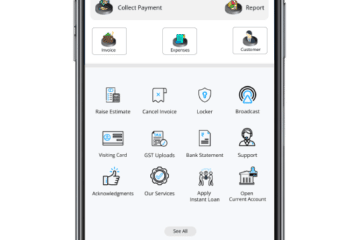Doorstep Banking In Rural India: Bringing Financial Inclusion To The Unbanked
Did you know that there are nearly 2 billion people in the world who do not have access to basic financial services? This is known as the “financial inclusion gap.” And it’s a huge problem. Why? Because without access to financial services, these people are unable to participate in the global economy. They are unable to save money, get loans, or build businesses. This leaves them trapped in poverty.
Thankfully, there is a solution: doorstep banking services in rural areas! Doorstep banking allows people who live in rural areas to access basic financial services right from their homes. This brings much-needed financial inclusion to the unbanked and helps them break out of poverty. In this blog post, we will discuss doorstep banking and how it is helping to bring banking services to the unbanked in rural India.
What Is Doorstep Banking And How Does It Work In Rural India Specifically.
The concept of doorstep banking is simple, but it’s revolutionary. Doorstep banking means that people can access basic financial services from their homes or other convenient locations like local markets or bus stops. This is a huge deal for rural areas because most people live far away from banks and don’t have the transportation to get there even if they wanted to.
Doorstep banking in rural India specifically works by using a network of local agents who bring financial services directly to the people. Now rural fintech companies have come to this field and they offer a wide range of digital financial services, including savings accounts, loans, insurance, and money transfers. This is a huge help for the people living in rural areas because it gives them access to financial services that they otherwise wouldn’t be able to get.
The benefits of doorstep banking in rural areas include the big one: financial inclusion for all!
Doorstep banking has a lot of benefits, but most importantly it helps bring “financial inclusion” to the people living in rural areas who don’t have access to basic financial services. This is a huge deal because it means that these people can now participate in the global economy, save money, get loans, and build businesses. This helps to break them out of poverty and improve their lives dramatically.
The Benefits Of Doorstep Banking For The Rural Poor In India
In rural India, there are many people who are without bank accounts and lack access to other financial services. Doorstep banking can help to bring these people into the formal financial system, providing them with a wide range of benefits.
Doorstep banking helps to overcome several barriers that prevent rural Indians from accessing traditional banking services. For example, people who live in rural areas often have to travel long distances to get access to a bank. This can be expensive and time-consuming in an area where there is little public transport. There may also be few banks nearby, which means that people may only have one option for banking services – this makes it difficult for them if they are not happy with the service they receive.
Doorstep banking is therefore crucial in helping to overcome these barriers and make financial services available to more people. In addition, doorstep banking can help to reduce costs for both banks and customers: it enables banks to reach more potential customers, while allowing consumers to avoid the cost of traveling long distances or spending time queuing up at a bank.
Doorstep banking is also helping to promote financial inclusion in rural India. Financial inclusion means that everyone has access to affordable and appropriate financial products and services, which can help them improve their lives. By providing people with access to banking services, doorstep banking is helping to bring about positive social and economic changes in rural areas of India.
Doorstep banking is helping to bring about positive social and economic changes in rural areas of India by providing people with access to banking services, which can help them improve their lives.
The Future Of Doorstep Banking And Financial Inclusion In Rural India.
Currently, the levels of financial inclusion in rural India are still quite low.
The Reserve Bank of India has identified that a large number of adults are unbanked and do not have access to convenient banking services. One way banks can help increase their outreach to rural areas is by offering doorstep banking facilities. This will allow more rural residents to have access to banking services without having to travel long distances.
The RBI has also introduced guidelines for banks on how they can provide financial inclusion products and services to rural customers. These guidelines include measures such as the use of technology in order to reach more people, simplified account opening procedures, and providing doorstep banking facilities.
By implementing these guidelines, banks can play a significant role in bringing financial inclusion to the rural population. This will help improve their access to banking products and services, which will ultimately lead to increased economic growth and development in rural India.



















